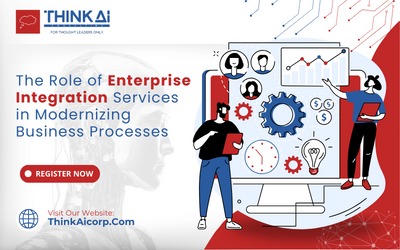As a manufacturing CIO, you know the importance of data-driven decision-making. But are you truly unlocking the power of your data? This blog explores how implementing real-time business intelligence can transform manufacturing operations.
You’ll discover use cases and best practices for leveraging real-time BI to gain actionable insights across the value chain. From the shop floor to the top floor, read on to learn how modern BI enables rapid response to emerging trends and empowers teams to optimize production, quality, and profitability.
This introduction sets the stage for an insightful look at strategies and solutions for manufacturing in the age of data.
Let’s get started!
The Need for Real-Time BI in Manufacturing
In modern manufacturing, staying competitive requires timely insights and informed decision-making. Real-time Business Intelligence (BI) emerges as a critical tool for manufacturing leaders, enabling them to harness data-driven insights instantaneously. From optimizing production processes to responding swiftly to market demands, the need for real-time BI in manufacturing has never been more evident. Let’s delve into the significance of real-time BI, its applications, and the transformative impact it holds for manufacturing enterprises:
Improved Visibility into Operations
Real-time BI gives manufacturing CIOs complete visibility into their operations and supply chain. With data updating every few minutes, CIOs can monitor key performance indicators like production rates, quality metrics, and inventory levels. They gain insight into bottlenecks or inefficiencies as they arise and can take corrective action immediately. This level of visibility and control leads to higher productivity, less downtime, and fewer missed customer delivery dates.
Enhanced Agility and Responsiveness
In today’s fast-paced markets, the ability to respond quickly to changes is critical. Real-time BI tools provide alerts and notifications when KPIs deviate from expected ranges so issues can be addressed right away. Dashboards offer an at-a-glance view of performance across sites, enabling rapid analysis and data-driven decisions. With real-time data at their fingertips, CIOs can pivot strategies and reallocate resources on the fly. This agility and responsiveness give manufacturers a competitive edge.
Data-Driven Decision Making
Real-time BI transforms manufacturing data into actionable insights that drive better decision-making. CIOs can monitor trends, spot correlations, and identify patterns to optimize processes. They can run ‘what-if’ scenarios to see the impact of changes before implementing them. Data-driven decisions tend to be more objective and accurate, improving outcomes. Over time, real-time BI helps build an organization’s data literacy and a culture where data is leveraged to maximum effect.
Real-time BI delivers significant benefits for manufacturing CIOs seeking to boost operational efficiency, increase agility, and enable data-driven decision-making. By providing constant visibility and alerts, real-time tools offer the opportunity to detect issues early, analyze root causes, and take corrective action to avoid disruptions. This results in cost savings, higher quality, and the ability to exceed customer expectations.
Real-Time BI in Action: Use Cases from Leading Manufacturers
Embarking on the journey of digital transformation, leading manufacturers are harnessing the power of Real-Time Business Intelligence (BI) to drive innovation and streamline operations. Through a series of compelling stories, this section illuminates how pioneering manufacturers leverage real-time BI to revolutionize their processes.
Reducing Downtime and Optimizing Productivity
Leading manufacturers are harnessing real-time BI to minimize equipment downtime and optimize productivity. For example, a heavy equipment manufacturer uses real-time sensor data and analytics to predict when critical components like hydraulic pumps will fail so they can be replaced proactively. This predictive maintenance approach has reduced unplanned downtime by over 50% and increased overall equipment effectiveness (OEE) by 20%.
Agile Decision Making and Responsiveness
Real-time visibility into operations and the supply chain empowers manufacturers to make fast, data-driven decisions and respond quickly to changes or disruptions. A global automotive company leverages real-time BI and dashboards to monitor vehicle production, enabling issues to be identified and addressed within 30 minutes. This real-time responsiveness has boosted manufacturing throughput by over 10%.
Data-Driven Process Improvements
By analyzing real-time data from connected equipment and systems, manufacturers can identify opportunities for process improvements and optimization. For example, a leading aerospace manufacturer used real-time sensor data to determine that reducing the speed of a deburring machine could significantly improve quality without impacting throughput. After implementing this change, the defect rate for a critical part dropped by over 60%.
Real-time BI is delivering transformative benefits for forward-looking manufacturers. By providing actionable insights into operations as events unfold, real-time BI empowers manufacturers to minimize downtime, optimize productivity, make fast data-driven decisions, respond quickly to changes, and continuously improve processes. Manufacturing CIOs should prioritize real-time BI to gain a competitive advantage.
Best Practices for Implementing Real-Time BI in Manufacturing
Navigating the implementation of Real-Time Business Intelligence (BI) in manufacturing requires a strategic approach and adherence to best practices. Let’s delve into the essential guidelines and strategies for successfully deploying real-time BI solutions within manufacturing environments:
Select Relevant KPIs and Metrics
To leverage real-time BI, manufacturing organizations must first determine the key performance indicators (KPIs) and metrics most critical to monitor in real-time. Some suggestions include overall equipment effectiveness (OEE), yield, quality, downtime, and cost. Focusing on a targeted set of KPIs will help narrow the scope and ensure real-time data is actionable.
Invest in Data Integration
Data from equipment, systems, and sensors across the plant floor needs to be integrated to enable real-time visibility into operations. This requires investments in technologies like an enterprise service bus, data virtualization, and master data management. With data integrated into a single source of truth, real-time BI tools can access and analyze the data to uncover insights.
Choose User-Friendly BI Tools
Real-time BI tools should provide an intuitive interface for business users to easily monitor KPIs, analyze root causes of issues, and make data-driven decisions. Look for BI solutions with interactive data visualizations, dashboards, alerts, and collaborative features. They should not require technical skills to operate so subject matter experts can independently analyze data and share insights across teams.
Provide Context with Historical Data
While real-time data shows the present state, historical data provides important context. Real-time BI solutions should allow users to view current metrics alongside historical trends to better understand normal vs abnormal performance. Some tools also enable predictive analytics using historical data and machine learning to anticipate future outcomes and events.
Continuously Optimize
Implementing real-time BI is an iterative process. Organizations must continuously revisit selected KPIs and data sources to determine if any should be added, removed, or modified based on changing needs. New use cases for real-time insights may also emerge as teams get accustomed to data-driven decision-making. Regularly optimizing real-time BI implementations will maximize the benefits and value over time.
Focusing on relevant metrics, enabling data integration, choosing intuitive yet powerful tools, providing historical context, and continuous optimization are best practices for unleashing the potential of real-time BI in manufacturing. With real-time visibility and actionable insights, manufacturers can accelerate operational improvements, reduce waste, decrease downtime, and optimize costs.
Conclusion
You now have a solid understanding of how real-time BI enables manufacturers to unlock tremendous value. By implementing real-time BI with the right strategies, manufacturers can achieve enhanced visibility, accelerate processes, and empower users with actionable insights. As showcased through the use cases, manufacturers who embrace real-time BI position themselves for success in an increasingly competitive landscape. With the best practices provided, you have a roadmap to begin your real-time BI journey.
Start small, prove value, and scale. Real-time BI delivers game-changing capabilities – the time for action is now. Seize the opportunity to transform your operations and boost performance. The future of manufacturing will be defined by data-driven, intelligent enterprises. Real-time BI can fuel your vision – if you dare to lead.
Ready to stay ahead in manufacturing’s data-driven revolution? Subscribe to my LinkedIn newsletter for exclusive insights, expert tips, and industry updates on leveraging Real-Time Business Intelligence (BI) for transformative success. With a solid understanding of how real-time BI drives value and the best practices to guide you, now’s the time to act. Start on your journey towards data-driven, intelligent manufacturing excellence. Don’t miss out – subscribe today and lead the charge towards a brighter future.

Empowering Healthcare & Smart Manufacturing CXOs | Transforming Challenges into Growth Opportunities with Data-Driven AI Innovation | Microsoft Gold Partner with 30+ years in Data and AI Strategy | #Inc5000 Honoree




